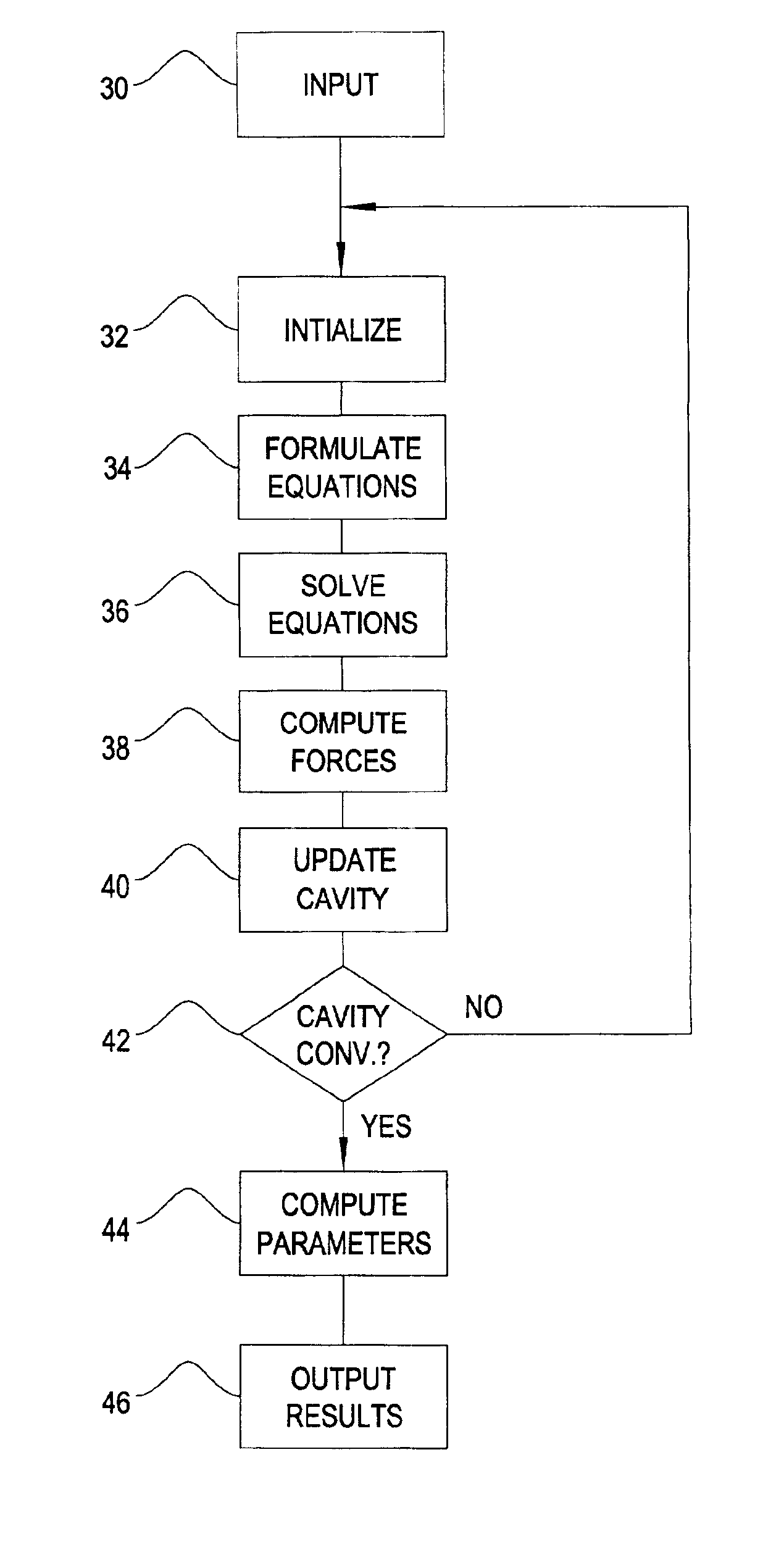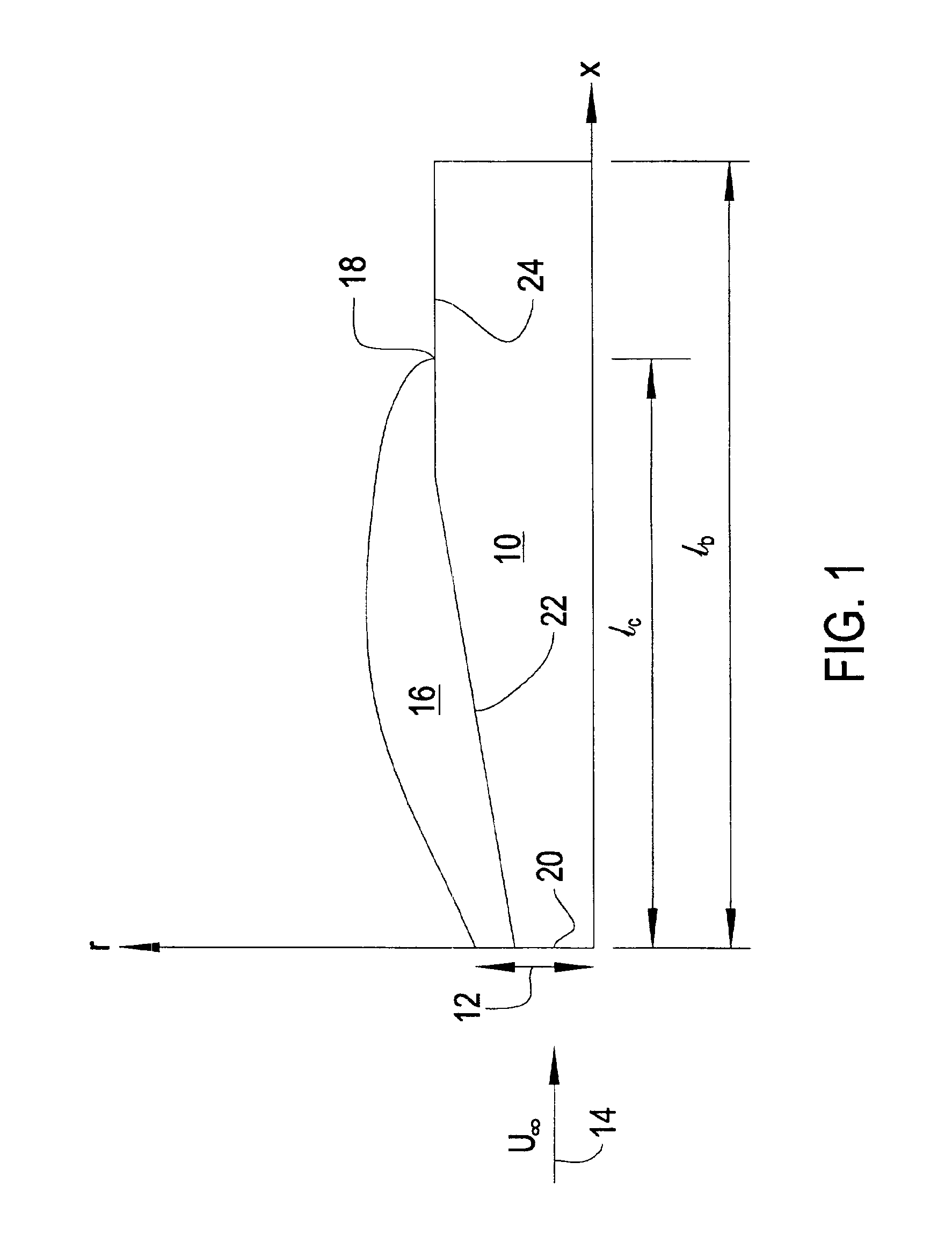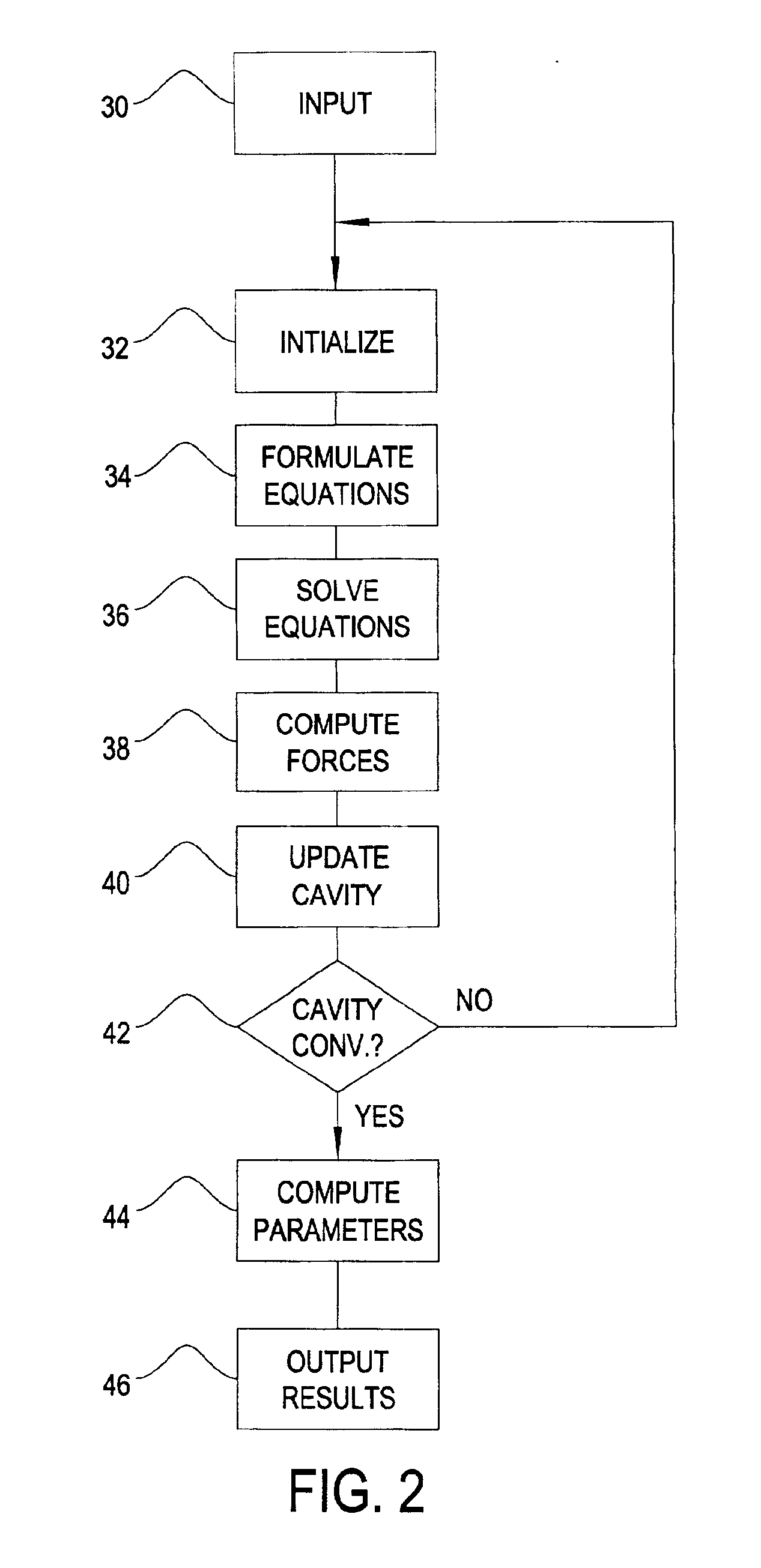Non-linear axisymmetric potential flow boundary model for partially cavitating high speed bodies
a potential flow boundary model and non-linear axisymmetric technology, applied in the field of hydrodynamic flow computer models, can solve the problems of partial cavitation, unsteady phenomenon of partial cavitation, and inability to account for the transition cas
- Summary
- Abstract
- Description
- Claims
- Application Information
AI Technical Summary
Benefits of technology
Problems solved by technology
Method used
Image
Examples
Embodiment Construction
FIG. 1 shows a diagram of the physical problem of partial cavitation. FIG. 1 shows a radial cross section of an axisymmetric body 10. Axis r represents the radius from the axis of body 10. Axis x represents the length along the body 10 measured from a cavitator disk 12. Although a cavitator disk is shown, the model can calculate cavities for cavitator cones as well as cavitator disks. Flow, U∞, is in the direction of arrow 14. A cavity 16 is shown extending from the edge of the cavitator along the length of body 10. The length of the cavity, lc, is shown by dimension arrows. Likewise, the length of the body, lb, is also shown by dimension arrows.
Body 10 extends beyond a cavity closure 18. Cavity 16 is closed to the body 10 with a modified Riabouchinsky cavity termination wall. Cavity closure 18 can be positioned in either body conical section 22 or body cylindrical section 24. The plane of cavity closure 18 is referenced in the following disclosure as an endplate.
Body 10 has a flat ...
PUM
 Login to View More
Login to View More Abstract
Description
Claims
Application Information
 Login to View More
Login to View More - R&D
- Intellectual Property
- Life Sciences
- Materials
- Tech Scout
- Unparalleled Data Quality
- Higher Quality Content
- 60% Fewer Hallucinations
Browse by: Latest US Patents, China's latest patents, Technical Efficacy Thesaurus, Application Domain, Technology Topic, Popular Technical Reports.
© 2025 PatSnap. All rights reserved.Legal|Privacy policy|Modern Slavery Act Transparency Statement|Sitemap|About US| Contact US: help@patsnap.com



